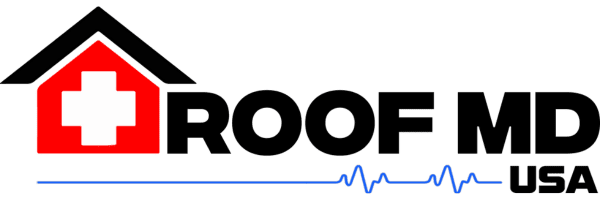Eaves are an essential part of your home’s roofing system, and when they are in disrepair, it can lead to significant issues. Identifying the signs that your eaves need repairs can save you time, money, and headaches down the road. In this guide, we’ll walk you through the telltale signs that your eaves need attention.
Visible Cracks and Split Wood
One of the most apparent signs that you need eave repairs is visible cracks and split wood. Over time, weather conditions can cause wood to deteriorate, leading to cracks and splits that compromise the integrity of your eaves.
Cracks and splits in wood can be more than just an eyesore. These damages allow water to seep into the wood, which exacerbates the degradation process by fostering mold and mildew growth. If you notice these issues, it’s a clear indication that your eaves need prompt attention. Ignoring them might result in more extensive and costly repairs in the future.
Small cracks might start innocuously, but they can expand over time, especially during freeze-thaw cycles in colder climates. Wood naturally expands and contracts in response to temperature changes, often making these cracks worsen. Taking immediate action to repair these splits can prevent further damage and help maintain the structural integrity of your eaves.
Peeling or Flaking Paint
Paint acts as a protective barrier for your eaves. When you notice peeling or flaking paint, it can be a sign of moisture damage. This issue needs to be addressed promptly to prevent further deterioration.
Moisture is particularly insidious because it doesn’t just affect the paint but also the wood beneath. Peeling paint can expose the bare wood to the elements, leading to rot. Over time, this exposure can destabilize the entire structure of your eaves, complicating the repair process. According to experts, regular inspections and maintenance can spot early signs before they escalate.
Besides being a technical problem, flaking paint also significantly reduces the aesthetic appeal of your home. It can make your house appear older and less well-maintained than it actually is. Refreshing the paint after repairing underlying moisture issues can both protect and visually enhance your property.
Water Stains or Rotting Wood
Water stains on your eaves or rotting wood are serious concerns. These signs indicate that water is penetrating the wood, leading to decay. Immediate repairs are necessary to prevent the problem from spreading.
Water stains often manifest as dark patches or streaks on the wood. These indicate that water has penetrated beyond the surface, often pooling within the wood itself. Rotting wood, on the other hand, will feel soft and may crumble easily when touched. Both are clear signals that your eaves are in trouble and require immediate professional intervention.
The causes of water stains can vary, but they often stem from improper drainage or gutter systems that are not functioning correctly. Ensuring your gutters are in working order can help mitigate future water damage to your eaves. If you’re dealing with rotting wood, replacing segments or treating the wood with specialized chemicals can halt the spread of decay.
Sagging Eaves
If your eaves appear to be sagging, it may be due to water damage, poor installation, or the weight of debris. Sagging eaves can lead to further structural damage and should be repaired as soon as possible.
Sagging eaves are often a sign that the supporting structure has been compromised. The sagging might be slight initially, often going unnoticed until it becomes a more serious issue. This sagging can lead to cracks in your walls and other structural components, making your home vulnerable to water damage and pests. Addressing the root cause of the sagging is crucial for a long-term solution.
Regularly cleaning your eaves and ensuring they are free from debris such as leaves, twigs, and dirt can help prevent sagging. The added weight from this debris can accelerate the sagging process. If sagging is detected early, reinforcing the eaves with additional supports might suffice. However, extensive sagging might require a more comprehensive repair approach.
Pest Infestations
Pests such as termites, carpenter ants, and birds can cause significant damage to your eaves. If you see evidence of pests, such as droppings or nests, it’s crucial to address the infestation and repair any damaged areas.
Pests are attracted to eaves because they provide a sheltered environment away from predators and harsh weather. Termites and carpenter ants, in particular, can weaken wooden structures by burrowing into them. Birds might also nest in eaves or gutters, adding more strain to the structures. Spotting these signs early can help you take action before too much damage is done.
In addition to physical damage, pest droppings can lead to hygiene issues, affecting both the exterior and interior of your home. Professional pest control services can help eradicate infestations while repairs to the eaves and other affected areas will ensure that pests cannot return. Ensuring regular inspections can help you catch these problems before they escalate.
Leaking Gutters
Leaking gutters can cause water to overflow and damage your eaves. Ensuring your gutters are in good working condition will help protect your eaves from water damage.
Water should always be directed away from your home to prevent damage. Leaking gutters fail to do this, and the subsequent overflow can lead to water pooling around the base of your eaves. This water can then seep into the wood, leading to rot and structural issues. Regular gutter maintenance, such as cleaning and checking for leaks, can help prevent these problems.
Gutter leaks can be caused by blockages, rust, or general wear and tear over time. By making minor repairs quickly, such as sealing small holes or replacing sections of the gutter, you can extend the lifespan of your eaves. Furthermore, professionally installed gutter systems may incorporate features like leaf guards to minimize blockages, reducing the risk of leaks.
Mold and Mildew Growth
The presence of mold and mildew on your eaves indicates excessive moisture, which can weaken the structure. Cleaning and repairing affected areas can prevent further damage.
Mold and mildew thrive in damp environments. If you notice these fungi growing on your eaves, it’s likely that your eaves are not draining water effectively. Mold can cause respiratory problems and other health issues, making it imperative to address it promptly. Once identified, the first step is to remove the mold using specialized cleaners and then address any moisture issues that contributed to its growth.
Left unchecked, mold and mildew can spread quickly, affecting the structural integrity of your eaves and spreading to other parts of your home. Frequent inspections and prompt action can keep your eaves free from mold and mildew, ensuring they remain strong and functional. In some cases, applying anti-fungal treatments can help prevent future outbreaks.
Conclusion: Keep Your Eaves in Top Shape
Regularly inspecting and maintaining your eaves can prevent major problems and extend the life of your roof. If you notice any of these signs, it’s essential to contact a professional to address the issues before they escalate. Properly maintained eaves not only protect your home but also enhance its overall appearance and value.


